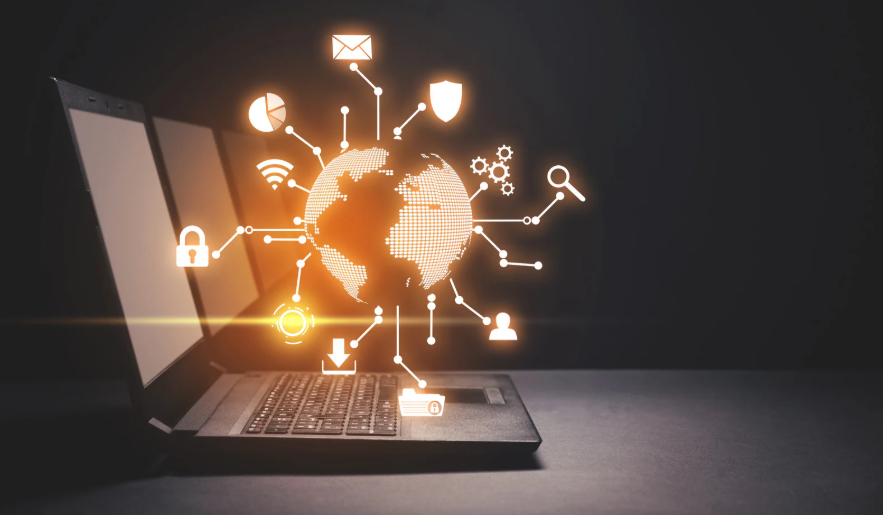Staying compliant with data protection laws is more critical than ever. Organizations are under increasing pressure to safeguard sensitive information while navigating complex regulatory frameworks. Innerworks International understands the challenges businesses face in aligning their cybersecurity practices with evolving compliance standards. From GDPR to HIPAA and PCI-DSS, cybersecurity solutions play a key role in meeting these requirements and protecting business integrity.
Why Compliance Matters in Cybersecurity
Compliance isn’t just about avoiding penalties—it’s about building a strong, secure foundation. Regulatory standards demand that organizations handle data responsibly, and failure to do so can result in fines, lawsuits, and reputational damage. Innerworks International emphasizes that integrating cybersecurity with compliance not only meets legal obligations but also strengthens trust with clients and partners. A proactive approach to compliance reduces risks and enhances operational resilience.
Key Compliance Requirements Across Industries
Every industry has its own compliance mandates, but there are common requirements that apply across sectors. These include managing data access, ensuring encryption, maintaining logs, preparing incident response plans, and conducting regular vulnerability assessments. Innerworks International helps organizations navigate these complex obligations by aligning security protocols with specific regulatory standards, whether in finance, healthcare, retail, or tech.
Role of Cybersecurity Solutions in Maintaining Compliance
Modern cybersecurity tools provide the foundation needed to enforce and demonstrate compliance. Automated checks, real-time alerts, and detailed reporting all help organizations stay on track. Innerworks International integrates solutions that control user access, monitor network behavior, encrypt sensitive data, and log all critical activities—ensuring your business meets both internal security goals and external regulatory demands.
Cybersecurity Tools That Support Compliance
Security Information and Event Management (SIEM)
SIEM solutions offer real-time analysis of security alerts and provide compliance-ready reporting. They help organizations detect and respond to threats while maintaining detailed logs. Innerworks International deploys SIEM platforms to assist businesses with ISO 27001, HIPAA, and SOX compliance by centralizing visibility and audit readiness.
Data Loss Prevention (DLP) Systems
Preventing unauthorized access to sensitive data is central to compliance. DLP tools monitor data usage, enforce policies, and prevent data exfiltration. Innerworks International uses DLP technology to ensure that sensitive files—such as customer records and financial data—remain secure and within regulatory limits.
Identity and Access Management (IAM)
IAM solutions are critical for enforcing role-based access and implementing strong authentication methods. These tools reduce the risk of insider threats and maintain secure identity governance. Innerworks International configures IAM systems that control user privileges, provide audit trails, and support zero-trust environments—all essential for compliance success.
Endpoint Protection Platforms (EPP)
Endpoints are common targets for cyberattacks, making their protection a regulatory priority. EPP tools defend laptops, desktops, and mobile devices from malware, phishing, and unauthorized access. Innerworks International integrates EPP solutions that meet compliance controls while securing remote and hybrid workforces.
Steps to Implement Cybersecurity for Compliance
The journey toward compliance starts with a thorough gap assessment. Innerworks International works with clients to identify which regulations apply to their operations, and what controls are missing. Once a roadmap is created, appropriate tools are deployed to enforce policies. Staff training is also critical—employees must understand the importance of compliance and how to maintain it. Ongoing monitoring and periodic audits ensure continuous alignment with both cybersecurity goals and legal requirements.
Common Compliance Pitfalls and How to Avoid Them
Organizations often fall into the trap of treating compliance as a one-time project. This mindset leads to outdated protections and weak oversight. Other common pitfalls include ignoring internal threats, relying on outdated tools, and failing to maintain proper documentation. Innerworks International helps businesses avoid these mistakes by implementing scalable, adaptive security programs that evolve with regulatory changes.
Benefits of a Compliance-Focused Cybersecurity Strategy
A well-integrated cybersecurity and compliance strategy offers more than just peace of mind. It reduces the likelihood of data breaches, improves response times during audits, and enhances transparency. Innerworks International has seen how a compliance-first mindset leads to more efficient operations, stronger customer confidence, and better long-term business outcomes. By treating compliance as a core element of cybersecurity, organizations can turn regulatory obligations into competitive advantages.
Takeaway
Maintaining compliance in a digital world requires more than manual checklists and periodic audits. It demands a proactive cybersecurity approach backed by smart technology. Innerworks International provides the tools, expertise, and ongoing support that businesses need to meet regulatory requirements without compromising performance. Whether you’re managing personal health records, financial transactions, or customer data, Innerworks International ensures your cybersecurity efforts stay aligned with compliance—now and in the future.















